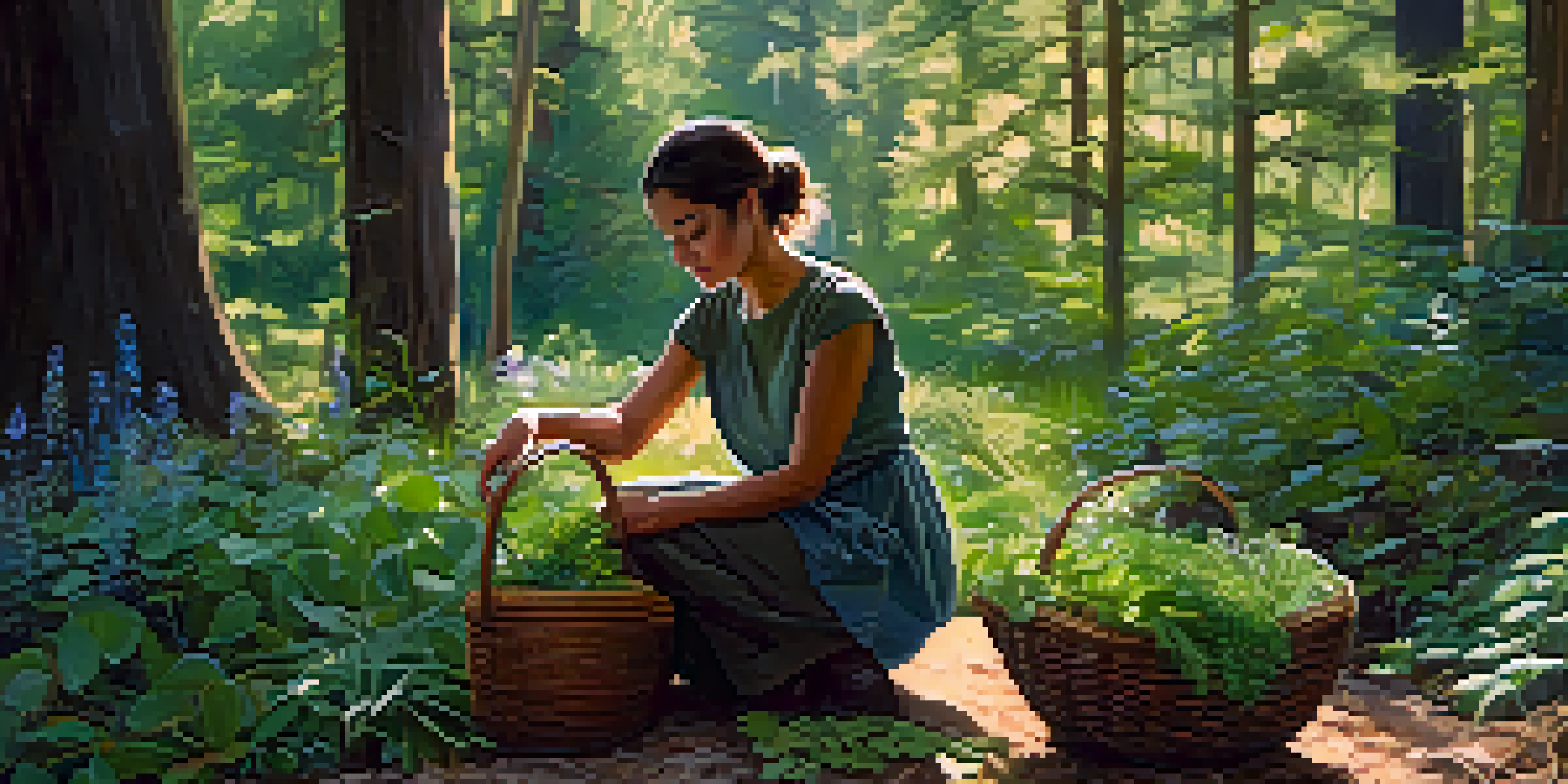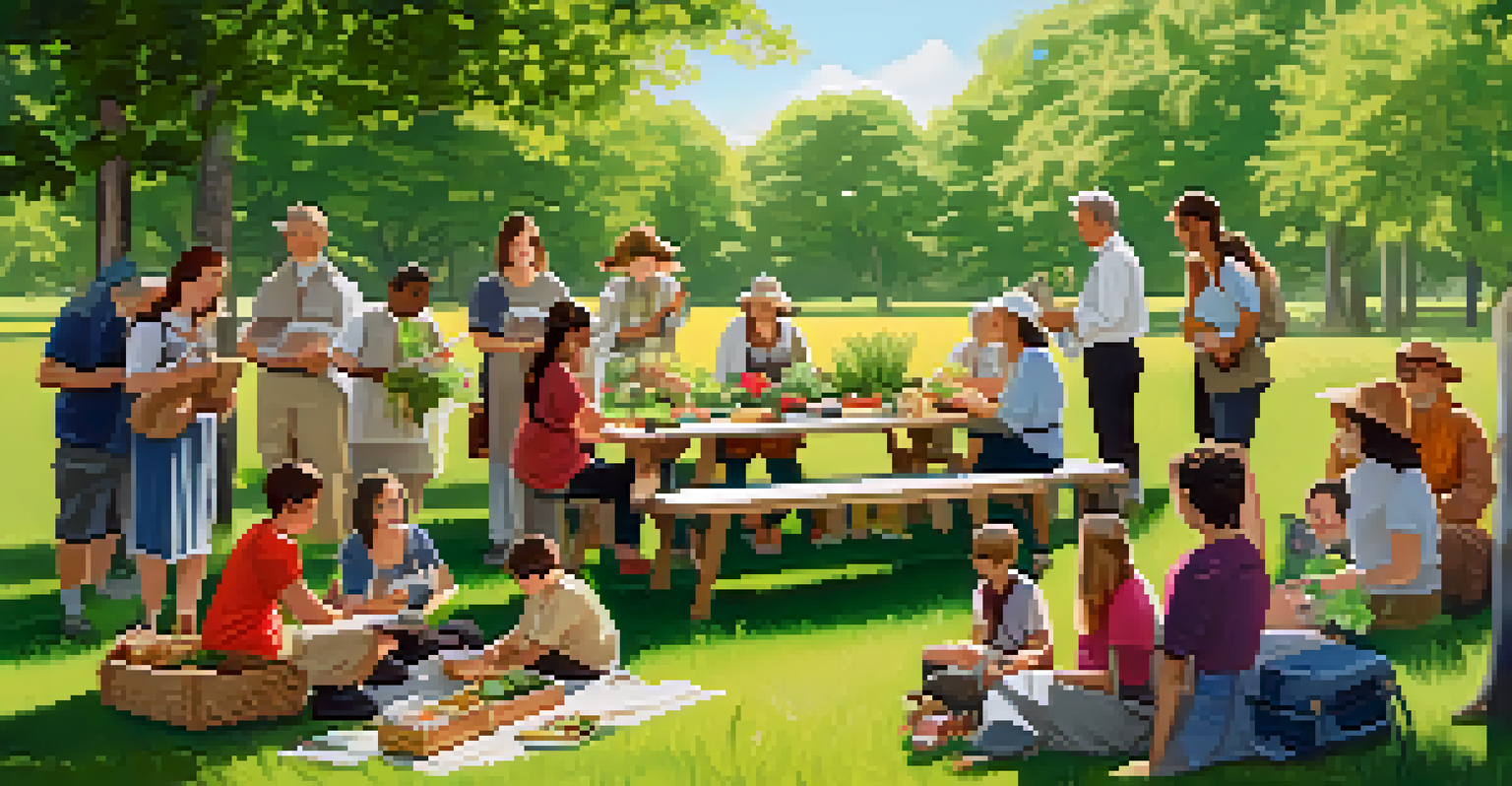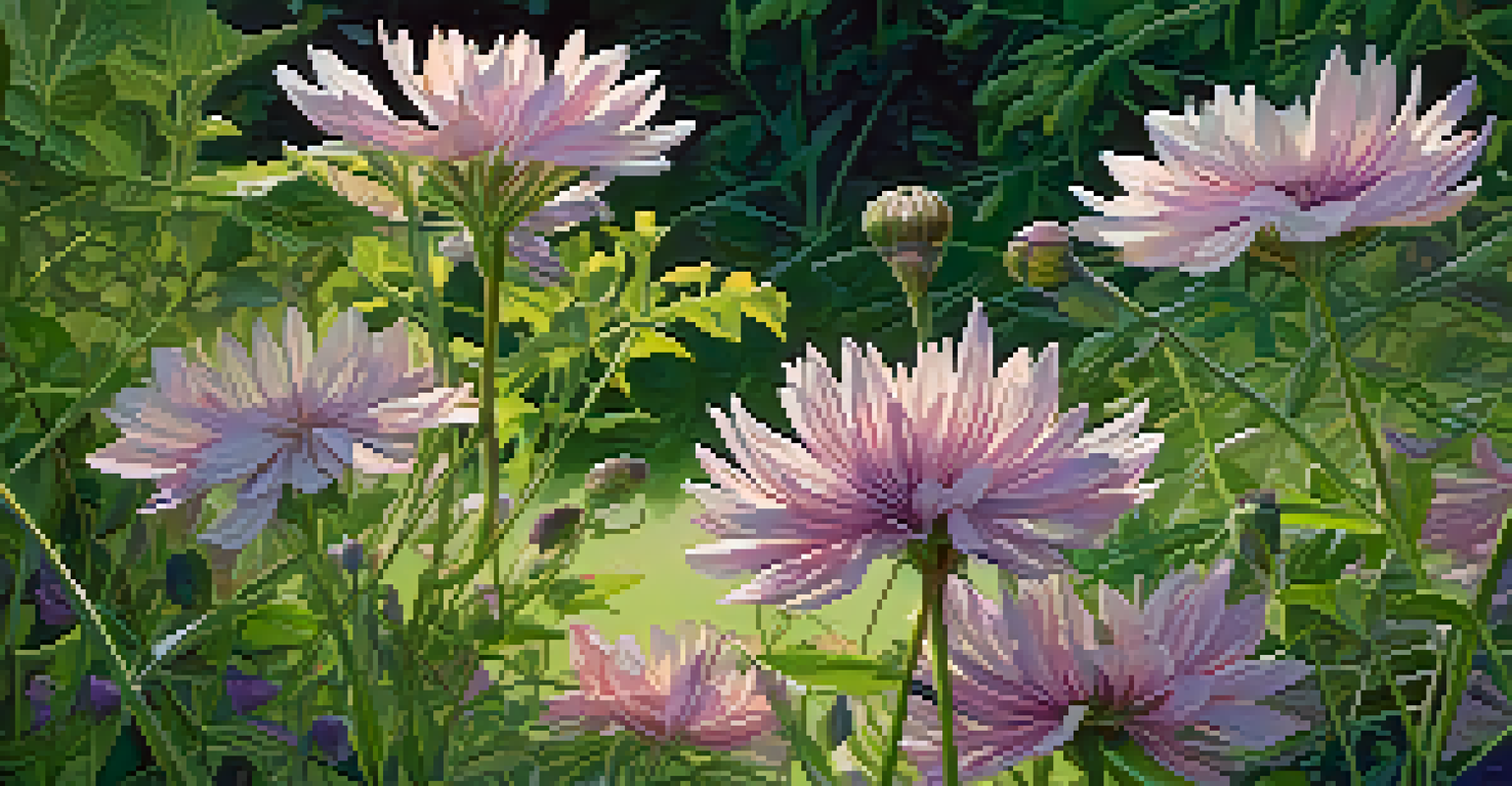Legal Guidelines for Foraging Wild Plants in Your Area

Understanding Local Foraging Laws and Regulations
Before heading out to forage, it’s crucial to know the laws in your area. Different regions have varying regulations regarding what can be harvested and where. Some places may allow foraging in public parks, while others strictly prohibit it or require permits.
Nature does not hurry, yet everything is accomplished.
Additionally, certain plants may be protected under local wildlife laws. For example, harvesting endangered or threatened species can lead to hefty fines and legal repercussions. Always check with your local environmental agency or a reliable online source for the most current regulations.
By understanding these legal guidelines, you not only protect yourself but also contribute to the sustainable management of local ecosystems. Responsible foraging ensures that wild plants can thrive for future generations to enjoy.
Identifying Public and Private Land for Foraging
When foraging, knowing whether you’re on public or private land is essential. Public lands often have more lenient foraging rules, but this can vary significantly from one location to another. Always look for signage that indicates whether foraging is allowed.

On the other hand, foraging on private property without permission is considered trespassing, which can lead to legal issues. If you're interested in foraging in someone's backyard or a local farm, asking for permission can often lead to a fruitful partnership.
Know Local Foraging Laws
Understanding local regulations is essential to ensure responsible foraging and avoid legal repercussions.
To navigate these complexities, consider using apps or maps that show land ownership. This way, you can be sure you’re foraging legally and respecting the rights of landowners.
The Importance of Sustainable Foraging Practices
Sustainable foraging is not just a legal responsibility; it’s an ethical one too. Overharvesting can threaten local plant populations and disrupt ecosystems. By practicing sustainable foraging, you help ensure that plants can regenerate and continue to flourish.
In every walk with nature, one receives far more than he seeks.
One way to forage sustainably is to follow the 'one for you, one for the earth' rule. This means that for every plant you harvest, you leave another to grow. Additionally, avoid taking the entire plant; instead, pick a few leaves or fruits to minimize impact.
By adopting these practices, you contribute to the health of local ecosystems while enjoying the fruits of nature. Plus, you’ll feel good knowing you’re doing your part to protect the environment.
Recognizing Endangered and Protected Species
As you venture into the wild, it’s vital to recognize plants that are endangered or protected. These species may be under threat due to habitat loss or overharvesting, and picking them can have serious consequences, both legally and environmentally.
For instance, many states have lists of protected plants that you can easily access online. Familiarizing yourself with these lists helps you avoid accidentally harvesting a plant that could land you in trouble.
Practice Sustainable Foraging
Sustainable foraging helps protect local ecosystems by ensuring plants can regenerate for future generations.
Moreover, learning to identify these plants can enhance your foraging experience. You’ll gain a deeper appreciation for local flora and contribute to conservation efforts simply by knowing what to avoid.
Permits and Licenses for Foraging
In certain areas, foraging may require specific permits or licenses. These are often put in place to manage natural resources and ensure that foraging activities are sustainable. Before you embark on your foraging journey, check if any permits are necessary for the location you plan to visit.
Some parks and wildlife areas may issue permits for foraging, while others may have designated areas where it’s allowed. Applying for these permits is typically straightforward and can often be done online.
Having the proper documentation not only keeps you on the right side of the law but also demonstrates respect for nature and the rules governing it.
Safety Guidelines for Foraging Wild Plants
Safety should always be your top priority when foraging. Not all wild plants are safe to eat, and some can even be toxic. It’s essential to educate yourself about the plants you’re interested in before you harvest.
A great way to ensure safety is to go foraging with experienced foragers or take a guided tour. This hands-on experience allows you to learn how to identify edible plants accurately while avoiding dangerous ones.
Engage with Foraging Communities
Joining local foraging groups can enhance your experience and provide valuable resources and knowledge.
Also, consider carrying a foraging guidebook or a plant identification app. These resources can help you verify what you find, ensuring that your foraging adventures are both safe and rewarding.
Community Resources for Foragers
Connecting with local foraging communities can greatly enhance your foraging experience. Many areas have clubs or online groups where foragers share tips, resources, and information about local regulations. Joining these communities can provide invaluable knowledge from seasoned foragers.
These groups often organize foraging workshops or guided forays, which are fantastic opportunities to learn and explore. Plus, there’s something special about sharing the joy of foraging with fellow enthusiasts.

Don’t underestimate the power of community; it can be a great way to stay informed about changes in local laws, discover new foraging spots, and even swap recipes for the plants you collect.